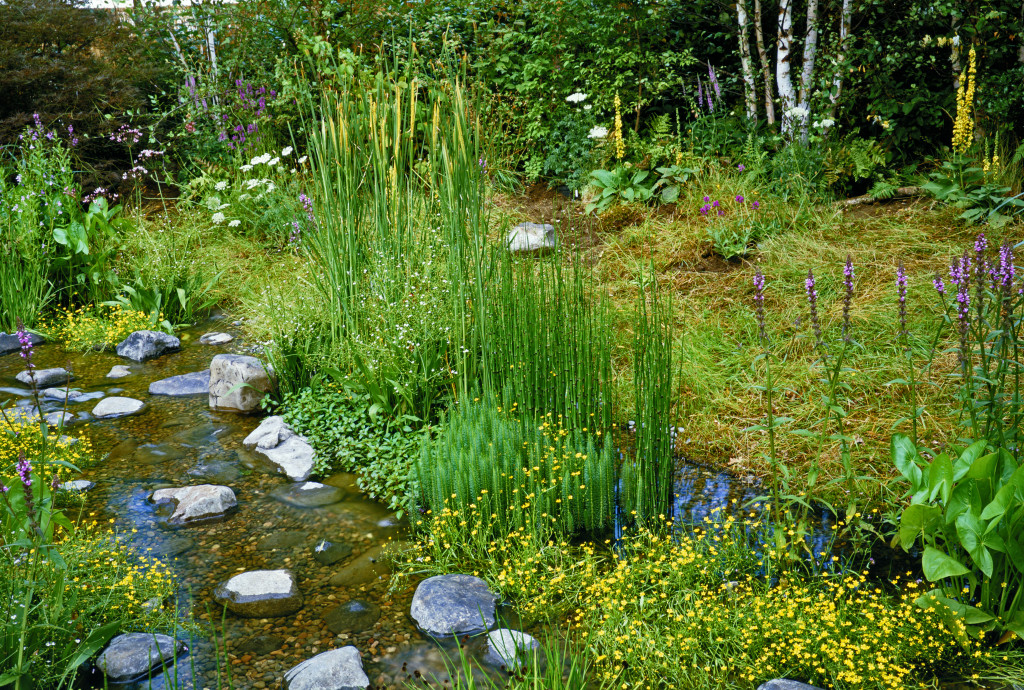Curb appeal sells a home and attracts more customers to the business. And fortunately, there’s no magic formula to make it work.
The most effective strategy to improve curb appeal is considering landscaping and commercial cleaning to maintain the yard or the outdoors. But the look might matter. You want it to stand out while complementing the rest of the surroundings.
So which landscaping style should you choose? Here are nine options:
1. Organic Gardens
Organic gardens refer to a landscaping design that doesn’t use chemicals, insecticides or fertilizers, to grow plants. Dirt from the garden is mixed with water and natural elements to help nourish plants.
Organic gardens might be perfect for those trying to practice a healthy lifestyle. They encourage living things to coexist naturally without any unnatural materials interfering with the process. It allows the soil to heal, which can improve the quality of the plants.
Organic gardening, though, can be challenging. For one, there’s no clear definition for the word “organic.” Moreover, for soil to qualify for one, it should be free of synthetic fertilizers and pesticides for three years.
2. Xeriscaping
Xeriscaping is a landscaping style that focuses on arranging plants and other elements so that they don’t waste any water. It requires studying the amount of irrigation needed for each plant, taking into account the slope of the land and exposure to direct sunlight.
Plants suitable for this landscaping include succulents, which are water-storing plants that can survive long periods without any watering. For this reason, xeriscaping is popular in desert areas or in places where rainfall is scarce.
3. Butterfly Garden
Butterfly gardens are planted to attract butterflies and other insects. The use of native species, as opposed to those that grow outside the garden, is encouraged for this type of landscaping design. Formal ponds with aquatic plants complete the look.
This outdoor area needs a lot of sunlight, so you can plant butterfly bushes that attract monarch butterflies. Flowering plants and native grasses are also suitable for butterfly gardens.
Recently, solar farms are combining their panels with butterfly gardens to help improve the population of bees and maximize the use of land.
4. Rock Gardens
Rock gardens are another way to add a sense of class to your home’s exterior design. The use of rocks, such as stones and boulders, is encouraged to create an elegant look. This type of landscaping is beneficial for those who want to avoid the expense of using bricks or concrete in their design.
Rock gardens are usually low-maintenance, which is perfect for those with busy lifestyles. They are also ideal for those who don’t want to change the way their landscape looks as seasons and trends come and go.

5. English Garden
English gardens are wide, open spaces planted with trees, shrubbery, and flowers that complement each other well. The use of hedges is encouraged in this type of landscaping design, especially those that resemble walls or fences.
Traditional English gardens also use water features, such as ponds and fountains, to create a relaxing atmosphere. These gardens can also be formal or informal.
Formal gardens feature plants and trees arranged in symmetrical or geometric patterns. Informal gardens still have shapes, but they are less “rigid,” like curves. It allows the plants to grow more naturally.
6. Food Garden
Food gardens refer to a landscaping design that focuses on planting fruit-bearing trees, vegetable patches, and edible flowers. This type of landscaping is perfect for those who want to live a self-sufficient lifestyle and use natural resources without relying on any manufactured product.
With food gardening, you can grow your food. When done right, you can save money and keep yourself healthy.
7. Cottage Landscaping
Cottage landscaping is a popular style that aims to recreate the look and feel of a European cottage. In this type of design, you’ll find brightly colored flowers arranged in flowerbeds among green grass and trees with blue skies as the backdrop.
The main feature here is color, from the grass to the flowers to the walls or fences of the garden. The more colors you use, the better.
Cottage gardens focus more on charm than elegance. They are meant to appeal to the senses rather than impress with grandeur.
8. Zen Garden
Nature can relieve stress, but no other landscaping style embodies that other than a Zen garden. It promotes minimalism, using only spare materials such as gravel, sand, and a few types of greens.
If the Zen garden is part of Oriental landscaping, you might find it with water structures, especially ponds and fountains, perfect for meditation.
9. Oriental Garden
Oriental gardens are inspired by Eastern philosophy and mythologies. They are meant to reflect the spiritual through landscape design rather than the physical world. To do that, you’ll find them filled with water features that symbolize prosperity and harmony, while trees provide shade from the sun.
Oriental gardens typically do not use flowers, as they symbolize death. Instead, you’ll find plants and trees that carry auspicious meanings in the region’s culture. These include bamboo (longevity), peach (generosity and nobility), pomegranate (health and fertility), pine (prosperity), and plum (happiness).
Landscaping is an investment. That’s why it’s essential to do your homework when choosing the right design for you. It will be with you for years, so make sure that whatever landscaping style you choose reflects your personality and lifestyle in the best way possible.







